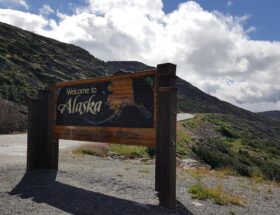Thousands of lakes exist in the world today and people across the globe are just eager to know which lake is the biggest, and the good thing is that if you have that question, we got answers for you.
Below, we have written down some of the biggest lakes that there are in the world along with all the information that you would need for that certain lake!
25 Biggest Lakes In The World
| Rank | Name of the Lake | Surface Area of the Lake | Type of the Lake |
| One | Caspian Sea | 143,000 sq mi (371,000km²) | Saline |
| Two | Lake Superior | 31,700 sq mi (82,100km²) | Freshwater |
| Three | Victoria | 26,590 sq mi (68,870km²) | Freshwater |
| Four | Huron | 23,000 sq mi (59,600km²) | Freshwater |
| Five | Michigan | 22,000 sq mi (58,000km²) | Freshwater |
| Six | Tanganyika | 12,600 sq mi (32,600km²) | Freshwater |
| Seven | Baikal | 12,200 sq mi (31,500km²) | Freshwater |
| Eight | Great Bear Lake | 12,000 sq mi (31,000km²) | Freshwater |
| Nine | Malawi | 11,400 sq mi (29,500km²) | Freshwater |
| Ten | Great Slave Lake | 10,000 sq mi (27,000km²) | Freshwater |
| Eleven | Erie | 9,900 sq mi (25,700km²) | Freshwater |
| Twelve | Winnipeg | 9,465 sq mi (24,514km²) | Freshwater |
| Thirteen | Ontario | 7,320 sq mi (18,960km²) | Freshwater |
| Fourteen | Ladoga | 7,000 sq mi (18,130km²) | Freshwater |
| Fifteen | Balkhash | 6,300 sq mi (16,400km²) | Saline |
| Sixteen | Vostok | 4,800 sq mi (12,500km²) | Freshwater |
| Seventeen | Onega | 3,700 sq mi (9,700km²) | Freshwater |
| Eighteen | Titicaca | 3,232 sq mi (8,372km²) | Freshwater |
| Nineteen | Nicaragua | 3,191 sq mi (8,264km²) | Freshwater |
| Twenty | Athabasca | 3,030 sq mi (7,850km²) | Freshwater |
| Twenty-One | Taymyr | 2,700 sq mi (6,990km²) | Freshwater |
| Twenty-Two | Turkana | 2,473 sq mi (6,405km²) | Saline |
| Twenty-Three | Reindeer Lake | 2,440 sq mi (6,330km²) | Freshwater |
| Twenty-Four | Issyk-Kul | 2,400 sq mi (6,200km²) | Saline |
| Twenty-Five | Urmia | 2,317 sq mi (6,001km²) | Saline |
1. Caspian Sea Lake (371,000km²)

Source:- Saviz Simchian / Flickr
The Caspian Sea is the world’s largest inland sea, lying between Europe and Asia. It is bordered to the west by Russia, to the north by Kazakhstan, to the east by Azerbaijan, to the south by Iran, and to the southeast by Turkmenistan. The Caspian Sea has a surface area of 371,000 square kilometers (143,000 square miles), making it the world’s largest lake by area.
2. Lake Superior (82,100km²)

At more than 600 miles long and nearly 300 miles wide, Lake Superior is the largest, deepest, coldest, cleanest, and most pristine of the Great Lakes. It is also the world’s largest freshwater lake by surface area, and the third largest freshwater lake by volume.
3. Lake Victoria (68,870km²)

Source:- Victor Carrera / Flickr
Lake Victoria is the largest lake in Africa, and the world’s largest tropical lake. It is approximately the size of Ireland and is bordered by Tanzania, Uganda, and Kenya. The lake is a popular tourist destination and is home to many different species of fish.
4. Lake Huron (59,600km²)

Source:- sonicgregu / Flickr
The Great Lakes are the largest group of freshwater lakes on Earth. They are a series of interconnected lakes, consisting of Lakes Superior, Huron, Michigan, Erie, and Ontario. Of these, Lake Huron is the second largest, with a surface area of 23,013 square miles. It is also the fifth largest lake in the world.
Lake Huron is located in the province of Ontario, Canada, and the state of Michigan, in the United States. Its shores are indented with numerous bays, inlets, and islands. The lake is fed by more than 300 rivers and streams, including the St. Clair River, which flows into its southern end. The outflow from Lake Huron is the St. Clair River, which flows into Lake Erie.
Lake Huron has a long and rich history. It was an important part of the early settlement of North America, and was the site of many battles during the War of 1812. Today, the lake is a popular destination for recreational activities such as fishing, boating, and swimming.
5. Lake Michigan (58,000km²)

The Great Lakes form the largest group of freshwater lakes on Earth. They are a system of five interconnected lakes, consisting of Lakes Superior, Huron, Michigan, Erie, and Ontario, that are drained by the St. Lawrence River. The Great Lakes cover an area of almost 95,000 square miles and contain about 20% of the world’s fresh surface water.
Lake Michigan is the third largest of the Great Lakes with an area of 22,394 square miles. It is the only Great Lake that is entirely within the United States. The lake is bounded by the states of Wisconsin, Illinois, Indiana, and Michigan.
Lake Michigan is over 1,000 feet deep in some places and its average depth is about 500 feet. The lake is fed by over 300 rivers and streams. The main rivers that flow into Lake Michigan are the St. Joseph, Kalamazoo, and Grand Rivers in Michigan; the Chicago, Des Plaines, and Fox Rivers in Illinois; and the White and Pigeon Rivers in Indiana. The lake drains through the Straits of Mackinac into Lake Huron.
The Great Lakes were formed by the action of glaciers during the last Ice Age. The glaciers carved out deep basins in the bedrock that filled with water as the ice melted. Lake Michigan was formed by the action of glaciers in the area that is now the state of Michigan. The name Michigan is derived from the Ojibwa Indian word mishigami, meaning “great water.”
6. Lake Tanganyika (32,600km²)
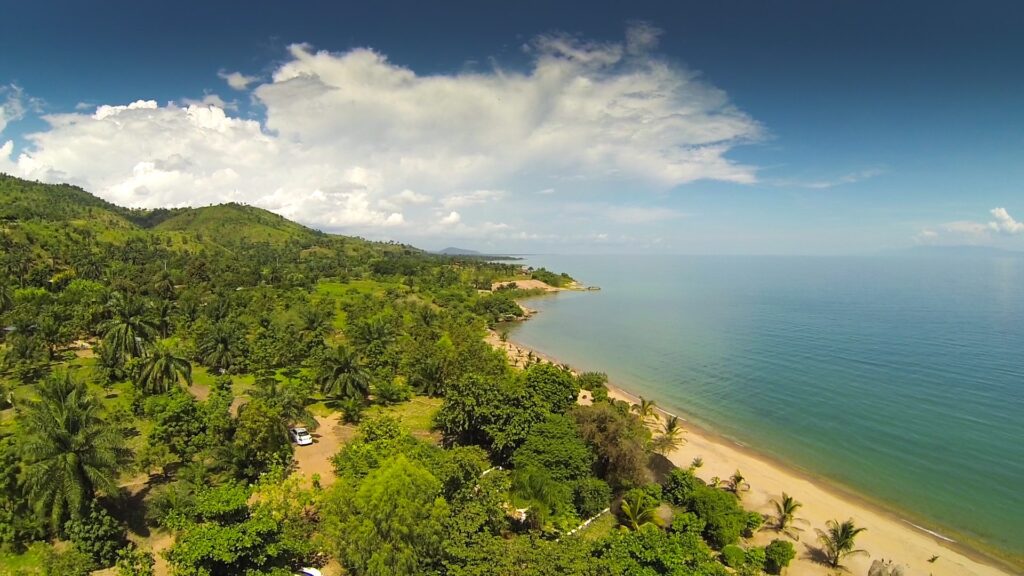
Source:- Philippe Collette / Flickr
Lake Tanganyika is the largest freshwater lake in Africa and the second largest freshwater lake in the world by volume, after Lake Baikal in Siberia. It is the world’s longest freshwater lake at 676 miles (1,088 kilometers) long. The lake is divided among four countries – Tanzania, the Democratic Republic of the Congo (DRC), Burundi and Zambia, with Tanzania (46%) and the DRC (40%) possessing the majority of the lake. The lake has an average depth of 2,470 feet (753 meters) and a maximum depth of 4,823 feet (1,471 meters).
7. Lake Baikal (31,500km²)

Source:- bfatphoto / Flickr
The largest freshwater lake in the world is Lake Baikal in Russia. This massive lake contains about one-fifth of the world’s freshwater supply. It is also one of the deepest lakes in the world, with a maximum depth of over 5,000 feet. Lake Baikal is home to many unique species of plants and animals, and is a popular tourist destination.
8. Great Bear Lake (31,000km²)

Source:- Igor Sorokin/ Flickr
Great Bear Lake is the largest lake entirely within Canada, fourth-largest in North America, and the eighth-largest in the world. The lake is in the Northwest Territories, on the Arctic Circle between 65 and 67 degrees of northern latitude and between 118 and 123 degrees western longitude, 156 m above sea level. With an area of 31,153 km2, it has a maxi-mum depth of 446 m and a mean depth of 102 m. Its total volume is 2,235 km3.
9. Lake Malawi (29,500km²)

Lake Malawi, also known as Lake Nyasa in Tanzania and Lago Niassa in Mozambique, is an African Great Lake and the southernmost lake in the East African Rift system, located between Malawi, Mozambique and Tanzania. The lake is home to more species of fish than any other lake, including over 700 species of cichlids. It is the third largest and second deepest lake in Africa. Lake Malawi is a meromictic lake; water at the bottom of the lake does not mix with water at the surface.
10. Great Slave Lake (27,000km²)

Source:- buck82/ Flickr
The Great Slave Lake is the second-largest lake in the Northwest Territories of Canada, the fourth-largest in the country, and the deepest lake in North America at 614 metres (2,014 ft). It is drained by the Slave River and its tributaries, the Taltson and the South Nahanni Rivers. By volume of water, it is the tenth-largest lake in the world.
11. Lake Erie (25,700km²)
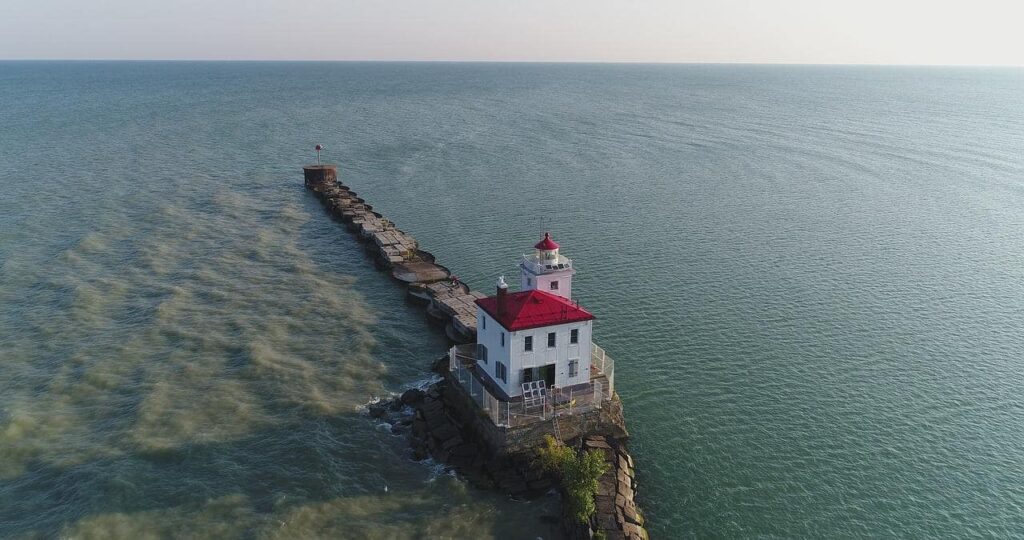
Erie is the fourth largest lake of the five Great Lakes in North America, and the eleventh largest globally if measured in terms of surface area. It is the southernmost, shallowest, and smallest by volume of the Great Lakes and therefore also has the shortest average water residence time. It is bounded on the north by the Canadian province of Ontario, on the south and west by the U.S. state of Pennsylvania, and on the east by the U.S. state of New York. The native Erie Indians called the lake Erie, meaning “long tail”.
12. Lake Winnipeg (24,514km²)

Source:- Ockert Botha/ Flickr
Lake Winnipeg is the sixth-largest freshwater lake in Canada, and the fourth-largest in the Prairie Provinces. It is the deepest lake in the prairies. The lake’s northern shore lies along the border of the Canadian province of Manitoba and the U.S. state of Minnesota. The lake’s average depth is 24.5 m (80 ft), and its maximum depth is 75 m (246 ft). Lake Winnipeg is Canada’s 11th-largest lake, and it is also the world’s 23rd-largest freshwater lake. The lake has a surface area of 24,514 km2 (9,465 sq mi), making it the world’s 13th-largest freshwater lake. Lake Winnipeg is the world’s 31st-largest lake by volume. The lake is drained by the Red River into the Hudson Bay.
13. Lake Ontario (18,960km²)

At 922,000 acres, Lake Ontario is the 14th largest lake in the world by surface area. It is also the smallest of the Great Lakes by water volume, holding only about 4% of the total. Lake Ontario is located entirely within the province of Ontario in Canada, and it is bounded by the Canadian province of Quebec to the north. It is the most populous lake in North America, with a population of over 11 million people living in its watershed. The lake is fed by the Niagara River, and its outlet is the St. Lawrence River. Lake Ontario is a popular destination for boaters, fishermen, and tourists, and its shores are home to a number of major cities, including Toronto, Canada’s largest metropolis.
14. Lake Ladoga (18,130km²)

Lake Ladoga is the largest freshwater lake in Europe. It is located in the Republic of Karelia and Leningrad Oblast in northwestern Russia, and is part of the Volkhov river basin. Its area is 17,600 square kilometers (6,700 sq mi). The lake is about 700 kilometers (430 mi) long, 80 kilometers (50 mi) wide, and about 50 meters (160 ft) deep. It has about 1,650 islands, with a total area of about 300 square kilometers (120 sq mi).
15.Lake Balkhash (16,400km²)

Source:- Thomas Pesquet/ Flickr
Lake Balkhash is a large inland sea in central Asia, lying between Kazakhstan in the north and China in the south. It is the largest lake in Kazakhstan and the second-largest in China. The lake is about 4,000 kilometers long and up to 800 kilometers wide, with an area of about 64,000 square kilometers. The lake is divided into two parts by a narrow strait. The northern part is called Greater Balkhash and the southern part is called Lesser Balkhash. The lake is fed by the Ili River, the Naryn River, the Syr Darya, and the Tarim River. The lake is home to many species of fish, including carp, bream, pike, and sturgeon.
16. Lake Vostok (12,500km²)

Source:- Mr.YuriGagarin/ Flickr
Lake Vostok is the largest of Antarctica’s more than 400 known subglacial lakes. It is hidden beneath 4 kilometers of ice and is roughly the size of North America’s Lake Superior. Lake Vostok is one of the most isolated lakes on Earth and has been cut off from the surface for an estimated 15 to 25 million years. Because of its great depth and long isolation, Lake Vostok is thought to be an ideal environment for microbial life. In February 2012, a team of Russian scientists announced that they had drilled through the ice and reached the surface of the lake.
17. Lake Onega (9,700km²)

Source:- Alexxx Malev/ Flickr
Lake Onega is the second largest lake in Europe. It is located in the northwest of the European part of Russia, in the republic of Karelia. It is the source of the Neva River. The lake is about 2,700 square kilometers in area and has an average depth of about 50 meters. It is the largest lake in Europe that is wholly within one country.
18. Lake Titicaca (8,372km²)

Lake Titicaca is the largest freshwater lake in South America, located in the Andes between Bolivia and Peru. It is also the highest navigable lake in the world, with a surface elevation of 3,812 m (12,507 ft).
The lake is fed by several rivers, including the Desaguadero, which flows from the melting glaciers of the nearby Mount Illimani. It is estimated that about 38 million people live in the Lake Titicaca watershed.
The lake is home to several indigenous peoples, including the Aymara and the Quechua. The Aymara believe that the lake was created by the god Tupac Yupanqui, and that it is the birthplace of the sun.
The lake is an important source of food for the local people, who fish for its abundant tilapia, catfish, and carp. It is also a popular tourist destination, with boats offering tours of the floating islands of the Uros people.
19. Lake Nicaragua (8,264km²)
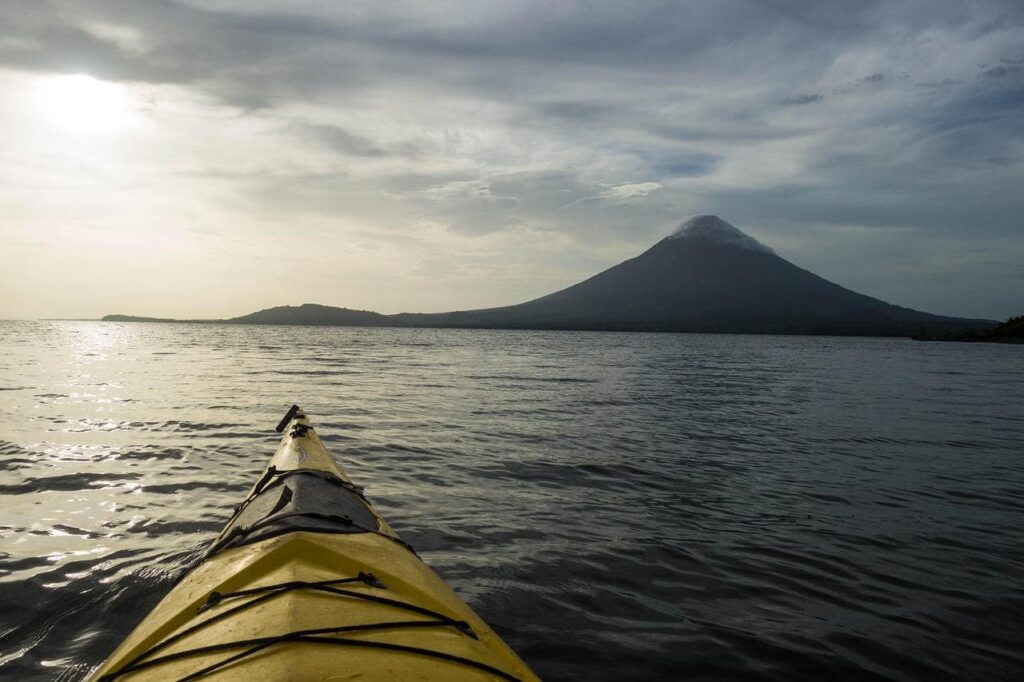
The largest lake in Nicaragua is Lake Nicaragua, also known as Cocibolca. It is located in the southwest of the country and is the 19th largest lake in the world by surface area. The lake has an area of 8,264 square kilometers and a maximum depth of 32 meters. The lake is home to a large number of fish species, including the bullseye fish, which is the national fish of Nicaragua. The lake also supports a large population of birds, including the Nicaraguan national bird, the turquoise-browed motmot.
20. Lake Athabasca (7,850km²)
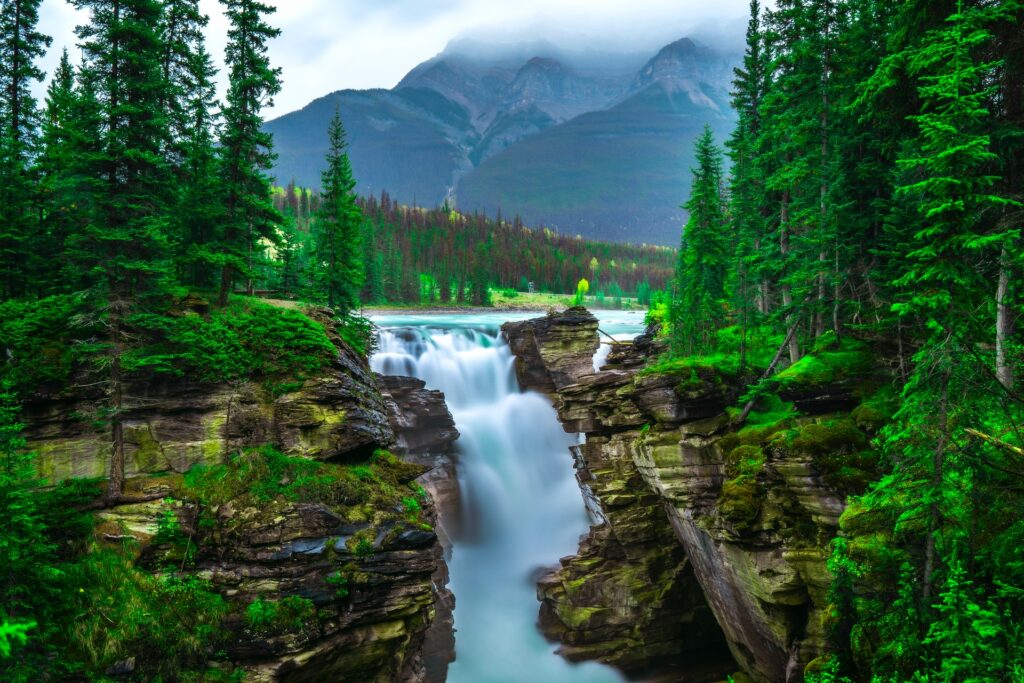
The largest lake in the Canadian province of Alberta, Lake Athabasca is located in the northwest corner of the province, on the border with the Northwest Territories. The lake is 1,939 km2 in size, with a shoreline of 3,875 km. It is the eighth largest lake in Canada. The lake is fed by the Athabasca River, which flows into the lake from the west, and the MacKenzie River, which flows into the lake from the north. The lake drains to the east into the Slave River, which eventually flows into the Arctic Ocean. Lake Athabasca is home to a large number of species of fish, including walleye, pike, and Lake trout.
21. Lake Taymyr (6,990km²)

Lake Taymyr is the largest lake in the world. It is located in the Russian Federation and is fed by the Khatanga River. The lake has a surface area of 14,700 square kilometers and a maximum depth of 3,532 meters. The average depth of the lake is 1,841 meters. Lake Taymyr is frozen for about eight months of the year.
22. Lake Turkana (6,405km²)

Source:- culbejack/ Flickr
The largest lake in the world is Lake Turkana in Kenya. It is so big that it is often referred to as a sea. It covers an area of over 10,000 square kilometers and has a depth of over 700 meters. The lake is home to a variety of fish, including the world’s largest known freshwater fish, the Nile perch. It is also a major stopover for migratory birds.
23. Reindeer Lake (6,330km²)
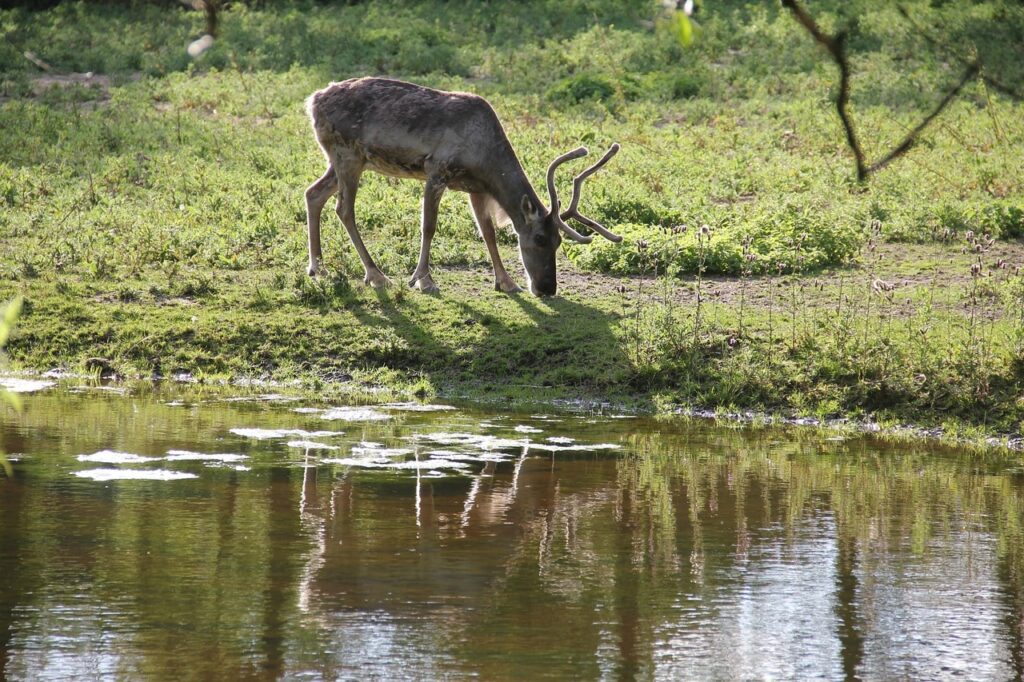
Reindeer Lake is a large freshwater lake located in the province of Saskatchewan, Canada. The lake is approximately 1,000 km2 in size and is the ninth largest lake in the province. The lake is home to a large population of wild reindeer, which is the reason for its name. The lake is also a popular destination for fishing, camping, and canoeing.
24.Issyk Kul Lake (6,200km²)

The Issyk Kul Lake is the largest lake in Kyrgyzstan, and the tenth largest lake in the world by volume. It is located in the Issyk-Kul Province of Kyrgyzstan. The name “Issyk Kul” means “hot lake” in the Kyrgyz language, and it is indeed a popular spot for tourists looking to relax in the Kyrgyzstan mountains. The lake is 668 kilometers in length and up to 60 kilometers in width, with a surface area of 5,500 square kilometers. The lake is fed by several rivers, including the Naryn River. It is the second largest saline lake in the world, after the Caspian Sea. The lake has no outlet, but its waters are rich in minerals and salt. The Issyk Kul Lake is a popular spot for fishing, swimming, and boating.
25. Lake Urmia (6,001km²)
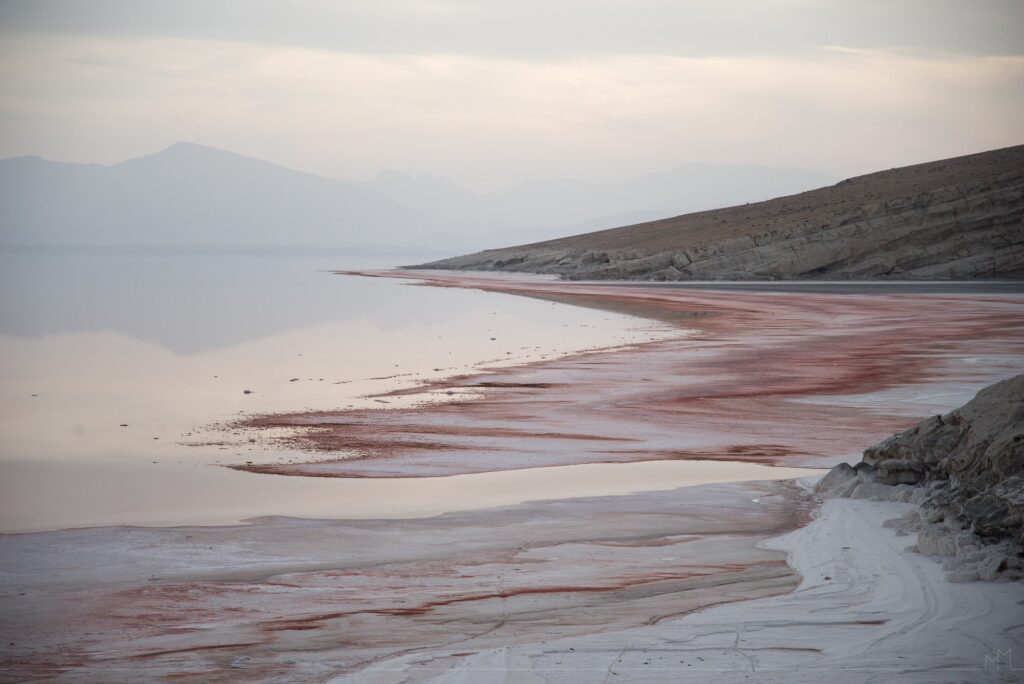
Source:- Martin Créon/ Flickr
The largest lake in Iran, Lake Urmia is a salt lake located in the northwest of the country. The lake is between the provinces of East Azerbaijan and West Azerbaijan, and the cities of Tabriz and Urmia. It is the largest lake in the Middle East, and the third largest salt lake in the world. The lake has a surface area of 5,200 square kilometers, and a maximum depth of 16 meters. The lake is fed by more than a dozen rivers, and is home to a variety of fish and bird species. Lake Urmia is a popular tourist destination, and its salty water is used for a variety of purposes, including the production of salt and cosmetics.
Which Is The Largest Freshwater Lake In The World?
Right now, Lake Baikal is the largest freshwater lake in the world by volume. Not only that, but this lake is also the deepest lake in the world right now. This lake is located in the Southern Siberia area of Russia and in 1996, it was declared as a UNESCO World Heritage Site, which means it is protected.
Which Is The Largest Lake In The World?
The largest lake in the world is the Caspian Sea, which has a lot of characteristics with a sea.
This lake is so big that it has shorelines in many countries due to its large size, such as Kazakhstan, Russia, Iran, Turkmenistan, and Azerbaijan.
When it comes to the water that it has, it has high salinity, which means it is salty, however it’s not on the same level of saltiness that the ocean has.
Which lake would you like to visit in the future? Let us know which lake you would want to visit in the future by leaving a comment in the comments section below!



